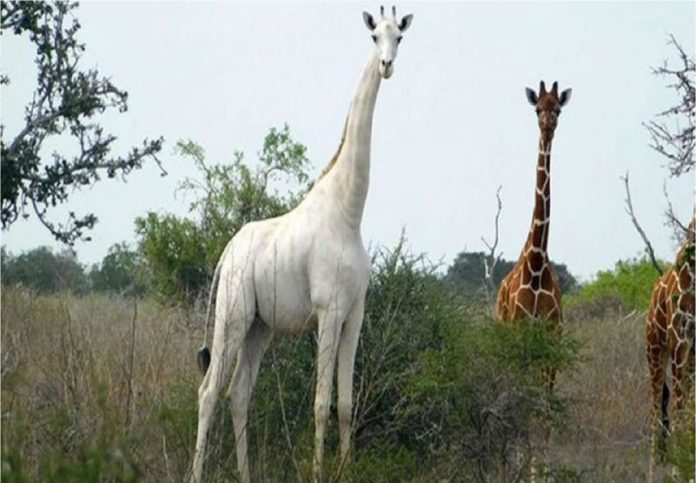New Delhi (NVI): The last known white giraffe in the world has been fitted with a GPS tracking device by conservationists to help protect it from poachers as it grazes in Kenya.
However, despite its singular status, the lonely male doesn’t have a name.
A conservation group said rangers could monitor the lone male giraffe’s movements in real time.
The giraffe has a rare genetic condition called leucism, which causes the loss of skin pigmentation.
He is thought to be the last of his kind, after poachers killed two of his family members, a female and her calf, in March, the Ishaqbini Hirola Community Conservancy said in a statement.
Their carcasses were found in a conservation area in Kenya’s north-eastern Garissa County, where the male giraffe is currently living alone.
The Conservancy, which oversees wildlife in the area, said the tracking device was attached to one of the giraffe’s horns on November 8.
The non-profit group said the tracking device would give hourly updates on the giraffe’s whereabouts, enabling rangers to “keep the unique animal safe from poachers”.
The Kenya Wildlife Society, the main conservation body in the east-African country, said it was happy to assist in efforts to protect “unique wildlife like the only known white giraffe”.
White giraffes were first spotted in Kenya in March 2016, about two months after a sighting in neighbouring Tanzania.
A year later, white giraffes made headlines again, after the mother and her calf from the conservancy in Kenya’s Garissa County were caught on camera.
Native to more than 15 African countries, giraffes are the world’s tallest mammals. They are hunted by poachers for their hides, meat and body parts.
Some 40 per cent of the giraffe population has disappeared in the last 30 years, with poaching and wildlife trafficking contributing to this decline, according to the Africa Wildlife Foundation (AWF).
Furthermore, Giraffes have been designated as a vulnerable species on The International Union for Conservation of Nature’s (IUCN) Red List, with an estimated population of 68,293 globally.
-CHK








